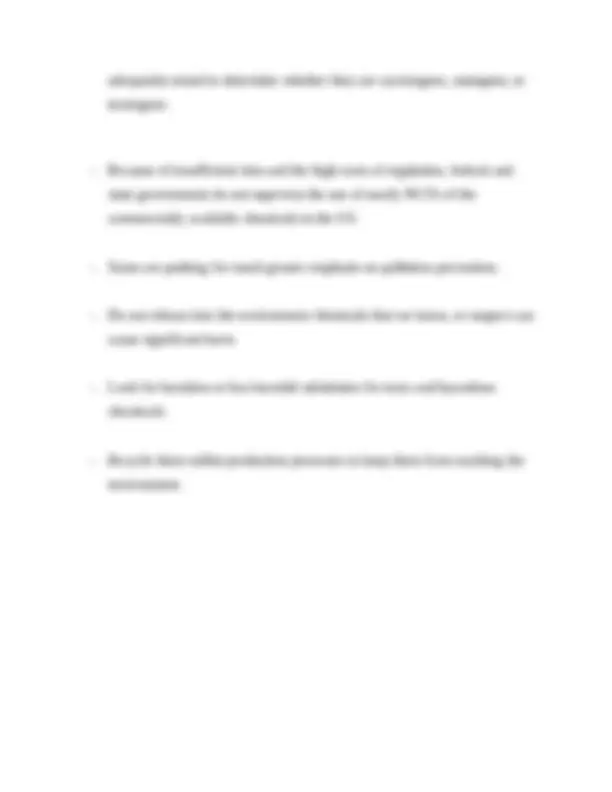



Study with the several resources on Docsity

Earn points by helping other students or get them with a premium plan


Prepare for your exams
Study with the several resources on Docsity

Earn points to download
Earn points by helping other students or get them with a premium plan
Community
Ask the community for help and clear up your study doubts
Discover the best universities in your country according to Docsity users
Free resources
Download our free guides on studying techniques, anxiety management strategies, and thesis advice from Docsity tutors
The different types of toxic agents and their effects on human and animal health. It also explains the different types of responses to chemical exposure, including acute and chronic effects. The document highlights the top five toxic substances in terms of human and environmental health, as listed by the EPA in 2004. It also discusses the limitations of estimating toxicity levels and risks, including the fact that only a small percentage of registered synthetic chemicals have been thoroughly screened for toxicity.
Typology: Lecture notes
1 / 3

This page cannot be seen from the preview
Don't miss anything!


The damage to health resulting from exposure to a chemical is called response. Acute effect is an immediate or rapid harmful reaction ranging from dizziness and nausea to death. Chronic effect is a permanent or long-lasting consequence (Kidney or liver damage, for example) of exposure to a single dose or to repeated lower doses of a harmful substance. Case reports provide information about people suffering some adverse health effect or death after exposure to a chemical. Epidemiological studies, which compare the health of people exposed to a particular chemical (the experimental group) with the health of a similar group of people not exposed to the agent (the control group), but limited by: Too few people have been exposed to high enough levels of a toxic agent to detect statistically significant differences. CHEMICAL HAZARD